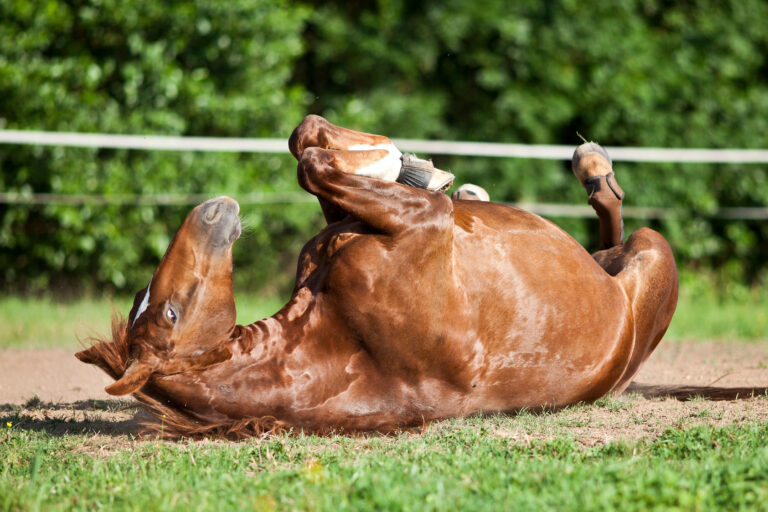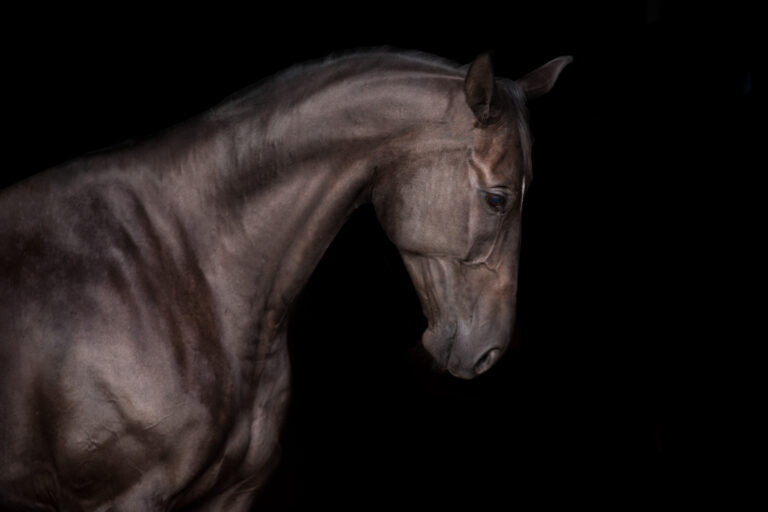
Over our years of designing for animals, we have received many questions about the use of color. What colors are best for equine veterinary clinics? How do animals see? Color theory is a fascinating science, but we humans attribute much more relevance to it than animals do. This is because we are highly visual creatures who use visual cues to communicate cultural ideas. Most animals do not see in the same wavelengths as humans. Horses, for example, cannot see the color red, as they only have blue and green cone receptors in their eyes. That said, we believe color theory has relevance to the design of equine clinic spaces, and in this article, we will explain why, as well as how to apply color theory to your own designs.
Cultural Context
For the purposes of this article, we will be using color theory as interpreted by Western cultures. In Eastern cultures, some colors have different meanings and underlying associations. In addition, each person interprets colors differently because of their unique background and individual processing of visual information. This is what makes color so exciting: It can assist in crafting a unique experience.
The Basics

With the caveat of cultural context, designers use color in medical settings for various purposes, including:
Wayfinding. Colors can help people find their way to a front door (think a red ER sign) or around a large facility. For example, an outpatient barn might have a green door and an isolation barn a red door, indicating no unauthorized entry.
Contrast. Colors can help provide important visual contrast. For example, green paint and flooring were used in hospitals for decades because the color is supposed to be restful to the eyes. Green is in the precise middle of the human visual spectrum, so it is supposedly easiest to focus when looking at green. While the scientific evidence for this theory is unclear, contrast is still a useful principle. One might use a floor color that contrasts with the color of stainless steel instruments and needles so it easier to find tools that fall to the floor. Contrast is also essential in signage, so information is readable for color blind individuals and those with impaired vision.
Hue and saturation. A color and its level of saturation can communicate a tremendous amount of information in our culture:
- Blue and other nature-inspired colors can create calming environments.
- Bright colors are activating. Reds and yellows, in particular, indicate speed and movement. This is why many fast-food restaurants use these colors—to move you along so more customers can be served.
- Purple is associated with royalty, exclusivity, and elegance.
- White is associated with purity and cleanliness, and it is highly associated with sanitary environments and health care. On a more practical level, when a space is white, it demands fastidious cleaning. This concept can be useful in health care settings.
Applications to Equine Clinic Design
With the basics in mind, we have learned many practical color theory ideas working with equine veterinarians.
Consider the cultural heritage of wood buildings. Wood does not perform well in medical buildings, but we still use it in equine hospital design because of the heritage of working with horses within wooden buildings. Traditional barns are evocative spaces; light filters down between wooden beams and siding, often from high above, creating a chiaroscuro effect of light and darkness. It is impractical to treat a horse in such a cavernous and unevenly lit space, but we can borrow warmth from the wood. In a healthy horse or outpatient barn, it is acceptable to use wood ceilings and wall cladding, provided it is heavily coated with urethane for cleanability. In medical areas, we must typically use more cleanable finishes, but we recommend pulling the warmth of wood touches into client welcome areas, arenas, and other acceptable spaces to embrace the tradition of wooden barns and create a homey and familiar setting for clients and their horses.
Colors might evoke local memories and history. Many old barns are red because red iron oxide (ochre) paints were the least expensive. If you wish to use red, use a faded ochre shade, similar to old barns, rather than a garish modern version. Some barns use green as a traditional color. Look to the heritage buildings in your area for inspiration.
Avoid biological colors in medical spaces. Avoid urine yellow, blood red, browns of all types, and bilious greens. These descriptions might make you chuckle, but you would be surprised at the number of times we have talked a veterinarian out of staining concrete floors a poop brown shade.
Be careful with beiges, particularly on floors. Certain beiges can feel dirty, like you tried to clean the floor, but it just could not be cleaned. A poorly chosen beige can feel like a yellowed fax machine or other moldering technological relic. Use beiges sparingly, lighten the saturation of the color, and ideally choose from a beige with fewer yellow tones. For example, the taupe color of bleached barn wood is an attractive beige—it is not at all yellowed. For floors in medical wash-down zones, such as surgery, whitish grays and blues are easier to clean and feel much more sanitary.
Use “sanitizing colors” to best effect. Red is the universal color to indicate “dirty,” and blue is the universal color to indicate “clean.” You can use these colors in glass or on the edges of cabinets in your pack prep zone to indicate locations of sterile supplies versus dirty tools awaiting cleaning. Imagine the logic of applying these colors elsewhere: Red buckets for mucking stalls and blue ones for feeding and watering horses. Red bins for storing dirty laundry and blue for clean laundered supplies. By using a universal color language, you can reinforce proper cleaning protocols and encourage a more sanitary facility.
Consider how horses see. Horses are dichromatic. Because their vision is shifted away from the red wavelengths, red light is a great choice for nighttime care in ICU and mare/foal areas, as well as to light exterior areas around barns at night. ICU areas should also be designed with bright white lighting to allow for treatment when needed. As an example of parallel applications, red lighting is used in vivarium design for nighttime monitoring of laboratory animals because it does not interfere with circadian rhythms.
As prey animals, horses are typically afraid of shadows. Keep equine treatment spaces light and evenly lit, and avoid creating shadowy areas. This means using light paint colors above the floor level. The floor itself might lack color options, as equine flooring choices are limited. But above the floor, strive for light and low-contrast colors.
Use high-quality lighting fixtures. No matter how well chosen your colors, the color rendering of the lighting fixtures can affect the feel of the space. LED lighting is far better than fluorescent lighting, but even with LED fixtures, use high-quality, commercially appropriate fixtures that have good color rendering indices (CRI). For color temperature, 3500K (Kelvin) is appropriate for office and laboratory spaces and other human working areas, as well as barns. Consider using 4000K for medical treatment areas and especially for surgery. The higher the color temperature, the whiter the light. Very white light creates a sanitary and sterile look, which is great for surgery but harsh for barns.
Final Tips and Tricks for Equine Clinic Design
Here are some other tips for getting the most out of your interior design and color choices in your equine clinic:
- Keep your permanent surfaces neutral, and put color in paint. Trust me, you will tire quickly of purple cabinets! But you might love a purple wall, and if you want to repaint it, you can.
- Do not be afraid of color. While we like to design medical spaces to be bright, sanitary, and mostly safe in terms of color choice, small pops of color here and there can be welcome and can unify a design and introduce joy. For example, imagine a whitish, warm gray waiting room, with a few landscape paintings to introduce green and two bright orange pillows on a warm leather couch. The backdrop is mostly neutral, but the paintings and pillows bring life, brightness, and joy, and the leather couch evokes tradition and heritage. Pull those same pops of color into other places in the hospital, such as on stall door frames. When well-chosen, intentional, and unified, these small touches make a design and create a branded experience.
- Get professional help. A designer can help you pull all the color samples ahead of time so you can approve them and make sure they go together. Color choices that look different in real life can be regrettable. A designer knows how to evaluate colors, get the samples, try paint swatches on walls, and other strategies to ensure a hue looks and feels great.
We humans are visual creatures with deep-seated cultural expectations about color. Therefore, color theory is important. The more you love working in your equine clinic space, the more likely you are to provide attentive care to the horses and your fellow teammates. Take pride in your space, and create a professional impression to match the care you give your patients and clients.
Related Reading
- Design Your Equine Clinic for the Team
- The Business of Practice: Building an Equine Veterinary Clinic Facility
- Design for Radiology in Your Equine Practice
Stay in the know! Sign up for EquiManagement’s FREE weekly newsletters to get the latest equine research, disease alerts, and vet practice updates delivered straight to your inbox.




